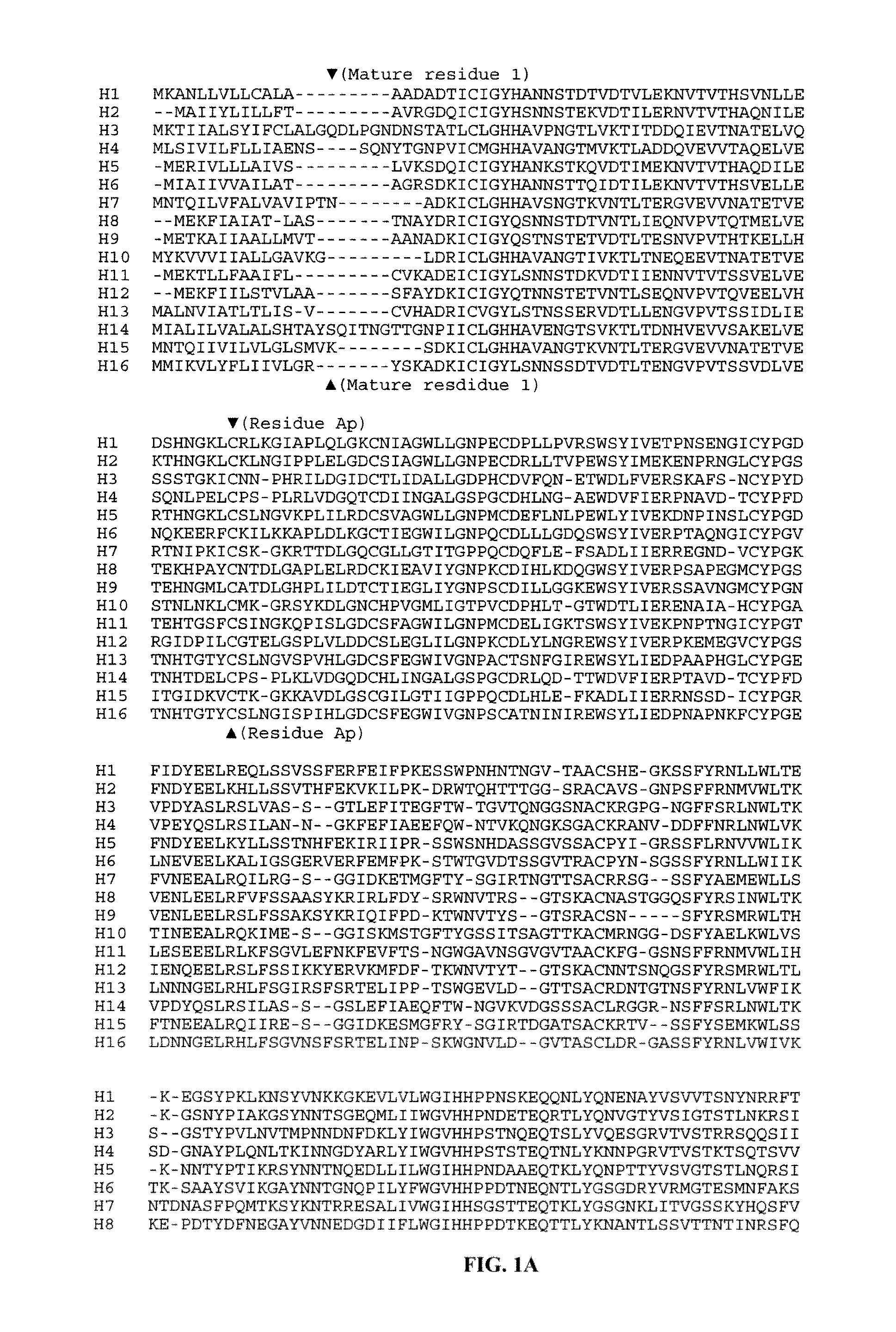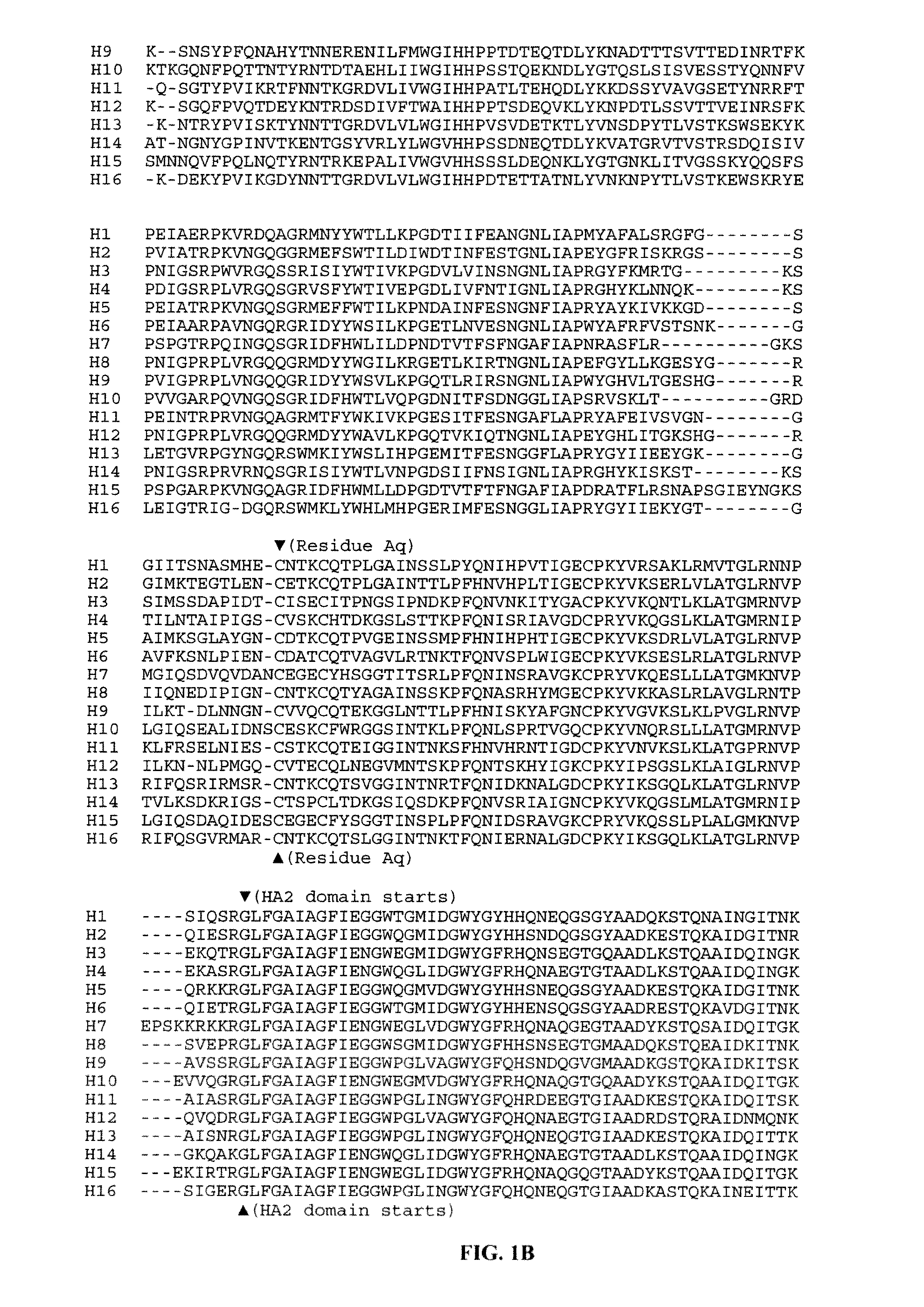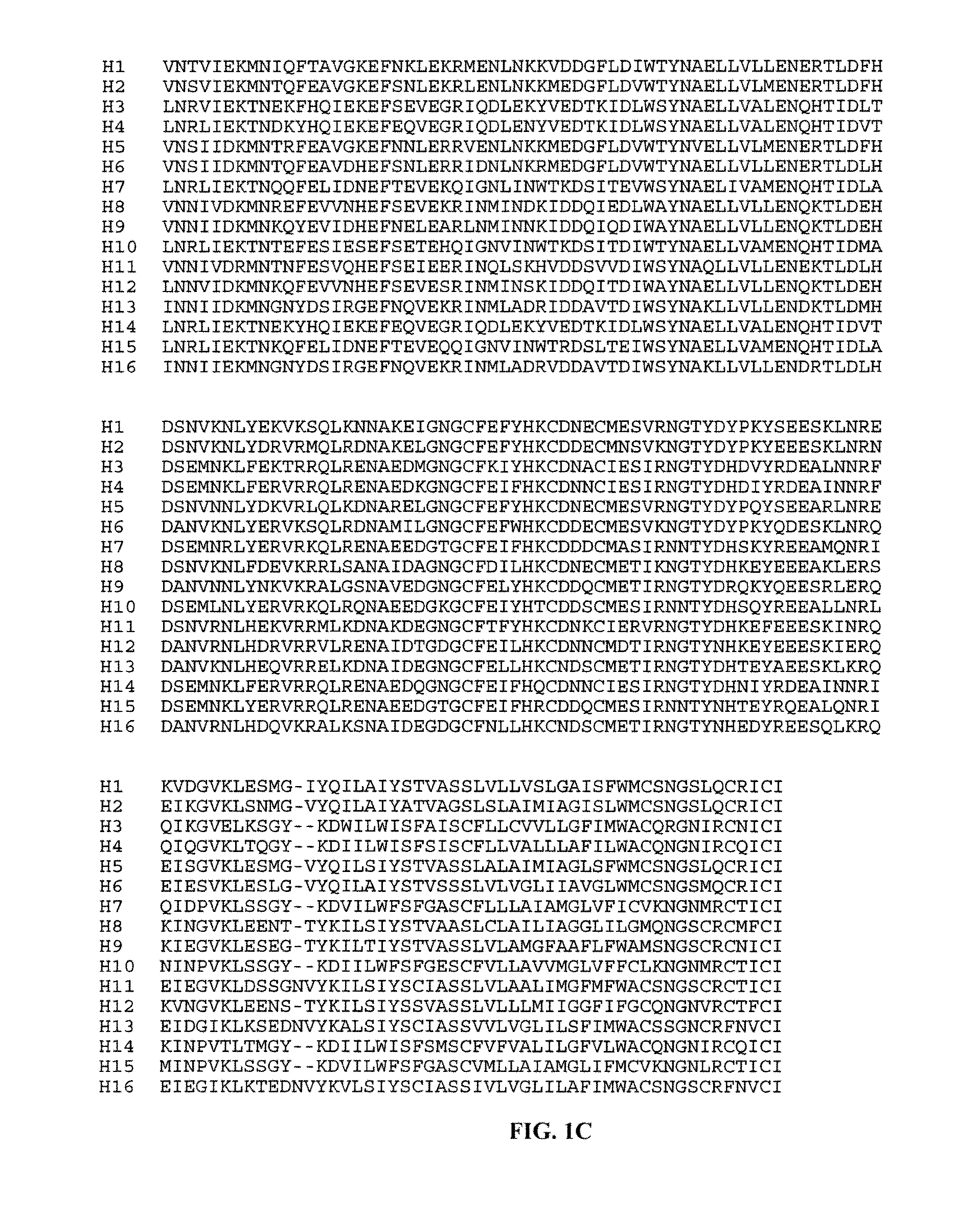Influenza virus vaccines and uses thereof
a technology of influenza virus and vaccine, applied in the field of influenza virus vaccine, can solve the problems of infrequent pandemics, substantial cumulative morbidity and mortality caused by seasonal influenza, and difficulty in achieving match, so as to reduce or ameliorate the severity prevent the progression of influenza virus infection, and reduce the duration of influenza virus infection
- Summary
- Abstract
- Description
- Claims
- Application Information
AI Technical Summary
Benefits of technology
Problems solved by technology
Method used
Image
Examples
example 1
6.1 Example 1
Influenza Hemagglutinin Stem Domain Polypeptides
[0409]This example describes the generation of constructs that express influenza hemagglutinin stem domain polypeptides. The influenza hemagglutinin stem domain polypeptides lack the globular head domain of influenza virus hemagglutinin and maintain the structural integrity of the stalk region of the influenza virus hemagglutinin. Since the stalk region of influenza virus hemagglutinin is relatively conserved among influenza viruses, the influenza hemagglutinin stem domain polypeptides should induce neutralizing antibodies against the stalk region of hemagglutinin that are cross-reactive with influenza virus hemagglutinin from different influenza virus subtypes and strains.
[0410]FIG. 3 depicts two schematic nucleotide constructs for expressing an influenza HA stem domain polypeptide from influenza A HK68-H3N2. FIG. 3 also depicts a schematic of a construct (WT HA) for expressing full length influenza HA. The first construc...
example 2
6.2 Example 2
Influenza virus vaccine based on Conserved Hemagglutinin Stalk Domain
[0422]This example describes the effectiveness of an influenza hemagglutinin stem domain polypeptide (sometimes referred to herein as a “headless HA”) vaccine in inducing an immune response that provides full protection against death and partial protection against disease following lethal viral challenge.
[0423]6.2.1 Materials and Methods
[0424]Plasmids
[0425]pGag-EGFP was generously provided by Carol Carter, Stonybrook University (Hermida-Matsumoto, L., and M. D. Resh. 2000. Localization of human immunodeficiency virus type 1 Gag and Env at the plasma membrane by confocal imaging. J Virol 74:8670-9). The pCAGGS expression plasmid was kindly provided by J. Miyazaki, Osaka University (Miyazaki, J., S. Takaki, K. Araki, F. Tashiro, A. Tominaga, K. Takatsu, and K. Yamamura. 1989. Expression vector system based on the chicken beta-actin promoter directs efficient production of interleukin-5 Gene 79:269-77). T...
example 3
6.3 Example 3
Challenge with Heterologous Viruses
[0461]The data described in Example 2 above shows that mice vaccinated with a PR8 headless HA construct are protected against challenge with PR8 virus (that is, protected against homologous challenge). These data indicate that an influenza virus hemagglutinin stem domain polypeptide (sometimes referred to herein as a “headless HA”) is sufficiently immunogenic to act as a vaccine but do not provide information on the breadth of protection achieved. To test whether an influenza virus hemagglutinin stem domain polypeptide can elicit an immune response which will protect against challenge with a range of heterologous viruses, mice will be vaccinated through intraperitoneal injection of 5 μg of a purified influenza virus hemagglutinin stem domain polypeptide or, as a control, 5 μg of full length HA in the context of whole inactivated influenza virus preparations. In both cases, the vaccine will be combined with MF-59 adjuvant prior to admin...
PUM
| Property | Measurement | Unit |
|---|---|---|
| temperatures | aaaaa | aaaaa |
| body weight | aaaaa | aaaaa |
| body weight | aaaaa | aaaaa |
Abstract
Description
Claims
Application Information
 Login to View More
Login to View More - R&D
- Intellectual Property
- Life Sciences
- Materials
- Tech Scout
- Unparalleled Data Quality
- Higher Quality Content
- 60% Fewer Hallucinations
Browse by: Latest US Patents, China's latest patents, Technical Efficacy Thesaurus, Application Domain, Technology Topic, Popular Technical Reports.
© 2025 PatSnap. All rights reserved.Legal|Privacy policy|Modern Slavery Act Transparency Statement|Sitemap|About US| Contact US: help@patsnap.com



